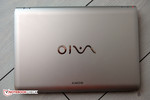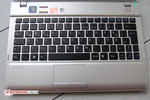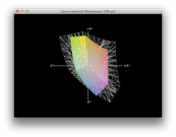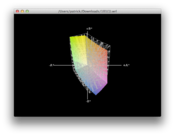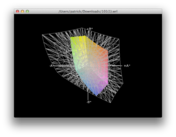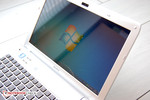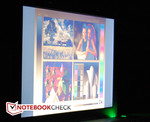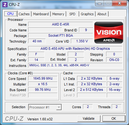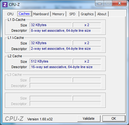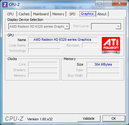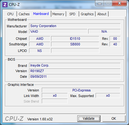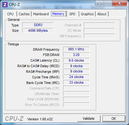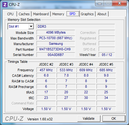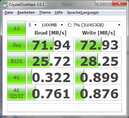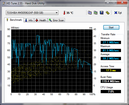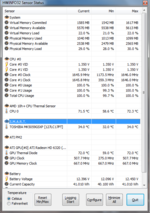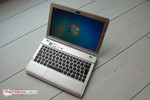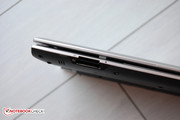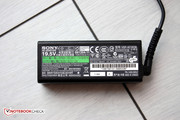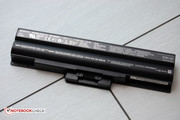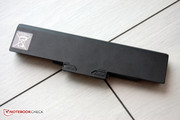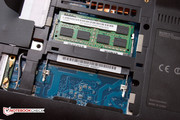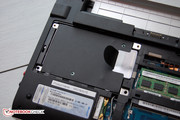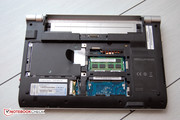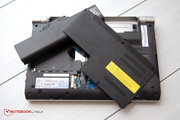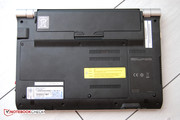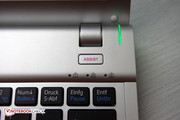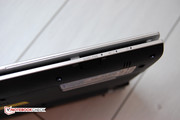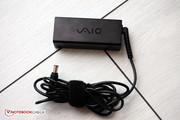Review Sony Vaio VPC-YB3V1E/S Notebook
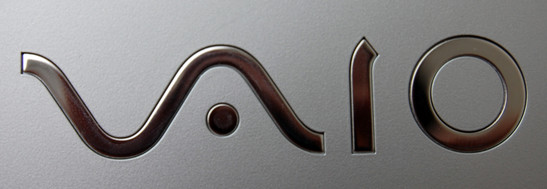
The Vaio VPC-YB3V1E/S is Sony's latest device in its ultra-portable notebook range. But, due to its AMD Fusion processor, we had an easier time deeming it as a netbook rather than an ultraportable. In return, the Sony notebook outgrows the typical netbook dimensions with its WXGA resolution of 1366 x 768 pixels. Ultimately, it is a compact entry-level laptop and the rather affordable recommended retail price of EUR 479 (~$630 USD) backs this claim. If based solely on appearance, the small Vaio suggests a higher price. Our model, completely clad in silver, will look good on the coffee table as a decorative accessory in any case.
Our review will show whether or not the Vaio VPC-YB3V1E/S can revive the successful Y range. Its looks are promising for sure, but its AMD E-450 core will be the wild card that will either sink this mini notebook or keep it afloat.
The Sony Vaio VPC-YB3V1E/S is not up-to-date in terms of operating system, though. Generally, there's nothing wrong with using the 32bit version of Windows 7 Home Premium with Service Pack 1, but it is inconceivable that Sony equips the device with 4 GB RAM considering the 32 bit system. The operating system along with the installed components cannot address more than 3.49 GB of RAM.
Case
Small, light, stylish - these adjectives describe Sony's Vaio Y range notebooks perfectly. This also applies to the compact notebook family's latest member. The Vaio VPC-YB3V1E/S is available in green, pink or silver colored display lids. The latter color adorns our test device and thus, the notebook is almost completely matte silver. In our opinion, one of the other trendy colors would have looked better, but that is fortunately a matter of taste. In contrast, the case's bottom is made of black plastic and looks very dull, but the rest of the notebook is a magnesium alloy with a higher quality feel.
Looking from the side, the 11.6 inch notebook no longer appears quite as elegant. It looks particularly thick in the rear where the battery is located. The dimensions of 290 x 25.0 x 203 millimeters aren't as compact as it seems. Sony bevels the case toward the front a bit, but it doesn't change anything about the device's actual height. On the other hand, the 1.46kg weight (3.22 pounds) is acceptable for the category and doesn't limit mobility.
There is almost nothing to be reproached in terms of workmanship. The gaps are small and even, and no sharp edges or ridges are found. The lid can open up to a maximum of 135 degrees, which should be satisfactory for most. However, we do have two minor points of complaint: The two delicate hinges don't always keep the display from teetering and the battery does not appear to fit perfectly in the case as it will wobble slightly.
Integrating the power button and socket in the case's rear area is a good idea. The power LED lights up in very jazzy colors (neon green, orange or blue depending on the operating state) and gives the Vaio a nice touch to an otherwise all-silver design.
Connectivity
You shouldn't expect an overwhelming variety of connections in a notebook of this size and price range. Nevertheless, the most important interfaces and sockets are present. This applies to the three USB 2.0 ports, distributed on the case's right and left in a 2:1 ratio. Both 3.5 mm jacks and the Gigabit LAN port are also on the right. An HDMI port is available on the device's left adjacent to the compulsory VGA socket. HDMI enables transmitting high definition movies to external monitors or TVs in digital quality. Since the HDMI-out supports a maximum resolution of 1920 x 1200, Full HD movies aren't a problem. Sony also installs a card reader on the device's front edge. The two slots accept SD cards as well as MemoryStick Duo and Pro. The installed slider for disabling and enabling wireless is located here as well and deserves a mention as it's very handy and can extend battery life.
Communication
Wireless communication options are a very important aspect of portable devices. Regrettably, Sony does not include a UMTS module although it would have increased mobility significantly. Of course, the 3G functionality can be upgraded easily and inexpensively via a USB drive. However, this solution usually draws more energy than an integrated module. In addition, a protruding stick represents a certain risk of damage to the device if it is frequently carried around.
The latest 802.11n WiFi standard is unsurprisingly installed in the Sony Vaio. The module, however, only transmits on the heavily used 2.4 GHz band as 5 GHz is not supported. Additionally, a Bluetooth module is available for communicating with cell phones or for wireless data sharing. Nonetheless, the Vaio only supports the rather outdated 2.1 EDR standard. We would have preferred Bluetooth 3.0 or higher. Compared to 2.1, Bluetooth 3.0 can achieve up to a 200Mbit/s transfer rate, nearly 100 times faster than its predecessor. Moreover, USB 3.0 device-to-device communication consumes less power because they automatically switch to the WiFi technology defined in the protocol after initial handshaking.
The standard fare is available on the cabled side. Every up-to-date notebook should have a Gigabit Ethernet controller regardless of price. Both WiFi and LAN controllers are members of the Atheros family from Qualcomm.
Scope of Delivery
No supplies other than the compulsory power adapter and its matching cable are included. However, quite a bit of paperwork can be found in the box. The instructions for system recovery are particularly interesting. Since Sony's Vaio VPC-YB3V1E/S doesn't have an optical drive, it is not possible to perform the recovery via DVD neither is there an included bootable Windows USB flash drive. Sony nevertheless solves this problem cleverly. On our review unit, it is possible to start the VAIO Care Rescue utility via the ASSIST button located above the keyboard. It opens the recovery routine, among other tools, no matter if the device is on or off. Other documents include a quick start guide, security instructions and references to the VAIO International Repair Service.
Software
We have already criticized the fact that Sony only gives the buyer 32bit Windows. We have also found it displeasing that Sony virtually stuffs the Vaio VPC-YB3V1E/S full of freeware. McAfee Internet Security annoyingly urges us to activate it frequently and the version of Microsoft Office 2010 is, of course, without a license.
Sony's VAIO Gate is more agreeable. It is a kind of quick start bar at the upper screen edge that can be customized or disabled with ease.
Maintenance
A fairly large maintenance cover, secured with three Phillips screws, is located on the bottom. Removing the cover proved to be very difficult in the case of our test device. In fact, we almost aborted the attempt because we feared we would destroy the cover. But, with a bit of patience and a flat screwdriver, it worked after all. In any event, the device wasn't very maintenance-friendly. Under the cover, the user can access the RAM and hard disk. Sony only installs one RAM bar and thus a second bank is available for easy upgrading. However, a memory upgrade only makes sense when switching to a 64bit Windows OS. The hard disk can also be removed and replaced without issues.
Unfortunately, it's not possible to access the fan via the maintenance cover. The entire base plate would have to be removed for this and requires unfastening many other screws. Sony obviously never intended the device to be opened any further.
Warranty
Sony isn't very generous with a base warranty of 12 months. However, the customer receives another year of warranty for free when the device is registered via the dealer. There are no further options or service modules for the Sony Vaio VPC-YB3V1E/S.
Input Devices
Keyboard
In such a compact notebook as Sony's Vaio VPC-YB3V1E/S, the keyboard's ergonomics are naturally affected. Sony can't prevent this fact either. Though the "normal" QWERTY keys have a fairly long side-length of 14 millimeters, the hyphen, arrows and F keys are reduced to an edge-length of only 10 millimeters. These keys are hard to hit without looking and can become aggravating if they must be used frequently by the user. There is no dedicated number pad but it can be emulated on the normal key field via Num-Lock. However, this is a makeshift solution because of the keys' slanted layout. The key drop is fairly short for a chiclet keyboard, but it is sufficient. However, we would have preferred a more solid and deeper stop. Besides that, the keyboard yields slightly but not by any significant amount to warrant concerns.
The dark gray keys reflect light in unfavorable conditions and thus the device has to be reoriented every now and then. The keys are not illuminated and so you should be capable of touch-typing in the dark. Except for the ASSIST key located above the keyboard on the right, there are no Sony-specific shortcuts or special keys. ASSIST opens VAIO Care which is helpful in troubleshooting and gives information about system settings and the recovery routine.
Touchpad
The touchpad is as compact as the entire device, but it is not too small. It measures 6.5 x 3.5 centimeters and bids a very limited surface for multi-touch gestures. In return, the most important gestures, such as one-finger scrolling or tap-to-zoom, work perfectly. The finger glides very smoothly over the surface and the touchpad's boundaries are clear. We weren't as excited about the mouse keys that are located directly below the touchpad. They emit a very loud click noise and don't exactly make a quality impression. However, you don't have to use the loud keys since the touchpad can also be used for left clicking.
Display
The screen isn't one of the Sony Vaio's best features. While the small 11.6 inch screen has quite a high resolution of 1366 x 768 with an aspect ratio of 16:9, the screen shows poor quality. For example, the maximum brightness is only 172 cd/m2 and not even 157 cd/m2 on average. This impression is marred even more by the very uneven illumination. The maximum brightness is only achieved in the screen's right third area. The lower left corner is visibly darker with only 130 cd/m2. The degree of illumination is unacceptable at 76 percent. This brightness is just sufficient for normal indoor use under average ambient lighting conditions. Nevertheless, the low brightness has one advantage - the brightness can be dimmed to such an extent that it doesn't glare even in very dark surroundings.
The screen's low brightness is not a good factor for a high contrast. We can see this even without elaborate testing. The lab confirms the impression: A weak black value of 1.26 cd/m2 adds up to only a satisfactory contrast ratio of 130:1.
| |||||||||||||||||||||||||
Brightness Distribution: 76 %
Center on Battery: 164 cd/m²
Contrast: 130:1 (Black: 1.26 cd/m²)38.69% AdobeRGB 1998 (Argyll 2.2.0 3D)
56% sRGB (Argyll 2.2.0 3D)
37.39% Display P3 (Argyll 2.2.0 3D)
The lab results only underline what the user will see - weak colors, little contrast and unsaturated black hues. Even a matte screen would not have been able to compensate for these weaknesses. Overall, the screen in the Sony Vaio VPC-YB3V1E/S gives a weak performance. The low black value is particularly evident in dark movie sequences since they look rather gray and unnatural.
The small Vaio doesn't earn kudos with the reproducible color spectrum either. The 11.6 inch screen only covers the sRGB color gamut reference by 57 percent. Although we don't expect rates of over 90 percent from an LED backlit screen, Sony's overall performance is quite poor. We used the Samsung Slate model Series 7 XE700T1A-H01DE for comparison. It also only provides 64 percent color gamut coverage, but excels with high brightness, low black values and a very good contrast.
Sony's Vaio VPC-YB3V1E/S just calls for working on the move - and of course outdoors. Unfortunately, the screen will gravely upset any such plans. Not only does the weak brightness limit use to covered spots free from direct sunlight, the screen also reflects enormously. Thus, outdoor suitability is not guaranteed.
The 11.6 inch display's hinges only allow opening up to approximately 135 degrees. Thus, a good viewing angle stability would be appreciated not only in this case. And the installed TN screen can regain a bit of ground here. Although it can't really keep up with viewing angle stable screens, in particular IPS models it copes quite well when looking from the sides. The colors remain fairly true and the contrast is almost stable. That's good because it can't get much worse. Even more annoying than viewing angle dependency is the surface's reflectiveness in horizontal angles. Colors invert quite fast vertically and the screen darkens in even greater angles. However, the viewing angle stability is acceptable for a TN screen - particularly of this price range. A positive aspect after the Vaio screen's previous weak presentation.
Performance
Except for the 11.6 inch screen's fairly high WXGA resolution, the Sony Vaio VPC-YB3V1E/S is clearly an entry-level device. In terms of size, it's somewhere between a netbook and a notebook, although its whole configuration underlines its affinity towards the entry-level sector. In terms of performance, the AMD E-450 integrates a CPU and GPU onto one die and can generally be ranked higher than Intel's Atom processors. However, the AMD APU does not hit a home run when compared with Intel Core ULV processor versions. In return, AMD's Fusion offering can be a lot cheaper.
Processor
An AMD dual-core CPU does its job in the Sony. The AMD E-450 (aka. Zacate) is made especially for entry-level laptops to compete with Intel's Atom range (e.g., Atom N550). The chip features an integrated Radeon HD 6320 graphics card with a memory controller for DDR3-1333 support. The chip's clock of 1.65 GHz has only been increased by 50 MHz compared to its precursor. Most improvements are found in the GPU. See the "Graphics Card" section below for more detail.
The CPU's power consumption is a very important factor particularly for very portable laptops. However, the AMD E-450 is more power-hungry than comparable Atom processors with a TDP (thermal design power) of 18 watts. This is likely due to the stronger graphics card.
We check the general performance using Cinebench R10's 32 bit version. We can't perform any 64bit benchmarks due to the 32bit Windows. The Sony Vaio VPC-YB3V1E/S accomplishes 1042 points in single thread rendering and 1929 points in multi-thread mode. Thus, the system is comparable to competing netbooks such as the Samsung 305U1A or MSI Wind U270 in this regard. Moreover, we were able to reproduce the performance evaluation scores when running on battery power.
System Performance
While CineBench benchmarks check the performance of single components, the PCMark benchmarks show how the system responds in various application scenarios. Here, many components have an impact on the result: CPU, graphics card, hard disk, memory capacity and operating system.
The Sony VPC-YB3V1E/S performs as expected when compared with similarly equipped contending models like the Samsung's 305U1A, MSI's Wind U270 or Lenovo's ThinkPad X130e to name a few. Nevertheless, there are minor differences. While the results are still on par with immediate contenders in PCMark 7, the Samsung 305U1A had a 25% better performance in PCMark Vantage compared to the Sony under review. The seemingly better performance of the Samsung can likely be explained by its faster hard disk.
The Window Performance Index of 3.8 points doesn't leave us awe-struck either. Windows identifies the processor as the weakest component. Thus, it's not surprising that comparable contenders accomplish the same score with a difference of only one or two tenths.
| PCMark 7 - Score (sort by value) | |
| Sony Vaio VPC-YB3V1E/S | |
| Samsung 305U1A-A01DE | |
| Lenovo ThinkPad X130e | |
| MSI Wind U270-E4523W7H | |
| PCMark Vantage - 1024x768 Result (sort by value) | |
| Sony Vaio VPC-YB3V1E/S | |
| Samsung 305U1A-A01DE | |
| Lenovo ThinkPad X130e | |
| MSI Wind U270-E4523W7H | |
Mass Storage
Sony installs a conventional 500 GB hard disk in its Vaio Y range. It is a 2.5 inch model from Toshiba that operates at 5400 revolutions per second. In view of the Vaio's overall performance, a faster hard disk wouldn't make sense anyway. A 5400 rpm disk usually results in lower noise emissions than a 7200 disk. An SSD wouldn't be an option in this price range from the manufacturer's point of view, although end users can install one if they prefer.
Compared to similar hard disks in other notebooks, the installed Toshiba MK5059GSXP only achieves a below average score. According to HDTune, the average data transfer rate is mediocre 59.2 MB/s with a somewhat more respectable access speed of 17.5ms. The CPU load is too high at seven percent.
Graphics Card
The Radeon HD 6320 graphics card integrated in the processor is currently deemed one of the strongest among netbook GPUs. In contrast to the GPU clock of 492 MHz of the prior AMD E-350 model, the Radeon HD 6320 now clocks with 508 to 600 MHz thanks to the Turbo technology. The shader unit count hasn't been modified and thus the GPU still has 80 arithmetic units.
Nevertheless, you shouldn't expect a high 3D performance from AMD's latest Fusion platform GPU. The immediate Intel Atom family contenders clearly lag behind the integrated graphics. However, the Radeon HD 6320 doesn't stand a chance against Intel's Sandy Bridge chipsets, not to mention the latest Ivy Bridge generation.
| 3DMark 06 Standard Score | 2706 points | |
| 3DMark Vantage P Result | 885 points | |
| 3DMark 11 Performance | 336 points | |
Help | ||
Gaming Performance
You won't likely want to buy the Sony Vaio VPC-YB3V1E/S for gaming purposes. Nevertheless, you may at times want to play a short game to pass time. Opting for the AMD E-450 with the Radeon HD 6320 in a netbook or entry level-device is most likely the better choice compared to Intel's Atom range. However, you should consider that the Fusion's graphics power is at the performance scale's lower end of up-to-date graphics card. In our games test (see our chart), we can identify certain demanding 3D games such as Anno 2070 or The Elder Scrolls V: Skyrim that can't be played even in minimum settings. Thus, the Vaio is at most suitable for older games and comparatively undemanding simulations. We didn't expect anything else.
Emissions
System Noise
The Sony Vaio VPC-YB3V1E/S's fan doesn't know the meaning of idleness. A quiet but noticeable noise is always emitted from the left hand side. Though it's not really annoying, it is present. The hard disk also hums along, but never gets louder than the fan. We had to put our ear on the keyboard to hear the read-write activities even in the HDTune test.
When idling, the Vaio generates a noise level of 32.6 dB and is thus only audible in quiet surroundings. The noise doesn't get annoying in the office or on the terrace. The 11.6 inch device never exceeds a noise level of 34.9 dB when idling. But when the fan spins at maximum speeds during full load, the noise becomes considerably more prominent. Fortunately, this doesn't occur during HD video playback where a volume of 35.2 dB is generated. In full load, it is 41.7 dB, which gets annoying in the long run. At least the fan generates a very consistent noise and doesn't tend to fluctuate.
Noise Level
| Idle |
| 32.6 / 32.6 / 34.9 dB(A) |
| HDD |
| 32.7 dB(A) |
| Load |
| 35.2 / 41.7 dB(A) |
 | ||
30 dB silent 40 dB(A) audible 50 dB(A) loud |
||
min: | ||
Temperature
Temperature isn't really an issue in the Sony Vaio VPC-YB3V1E/S. The little notebook stays within a pleasant temperature range on both the top and bottom during all load situations. This especially applies to the wrist rest where temperatures beyond 40 degrees Celsius can become unpleasant. The wrist rest never exceeds 27 degrees, although we noticed a minor hot spot on the bottom's center during full load. Nevertheless, the device never gets so hot that it would start to get unpleasant on the lap. Since the bottom is made of plastic, the notebook subjectively feels cooler than a metal device at the same surface temperature.
We can say the same thing about the Vaio's innards in terms of temperature development. In our two-hour long stress test using Furmark and Prime95, the CPU barely heats up and reaches a maximum of only 72.3 degrees Celsius.
(+) The maximum temperature on the upper side is 30.7 °C / 87 F, compared to the average of 35.9 °C / 97 F, ranging from 21.4 to 59 °C for the class Subnotebook.
(+) The bottom heats up to a maximum of 35.6 °C / 96 F, compared to the average of 39.4 °C / 103 F
(+) In idle usage, the average temperature for the upper side is 24.4 °C / 76 F, compared to the device average of 30.7 °C / 87 F.
(+) The palmrests and touchpad are cooler than skin temperature with a maximum of 27.2 °C / 81 F and are therefore cool to the touch.
(±) The average temperature of the palmrest area of similar devices was 28.3 °C / 82.9 F (+1.1 °C / 1.9 F).
Speakers
The Sony Vaio VPC-YB3V1E/S's speakers aren't visible at first glance. The manufacturer places them on the case's front area, but the openings are located on the device's bottom. When the laptop is on a table, it radiates sound towards the front top and then towards the user. Much of the volume, which isn't particularly high to begin with, is unfortunately lost when the Vaio is picked up. The speakers treble-heavy and thin sound make matters worse. Basses are almost non-existent and overall quality is not the definition of crystal clear. The installed speakers are a makeshift solution for the odd YouTube video at most. The user should definitely use good external speakers or connect the Vaio to a stereo system when listening to music.
Battery Life
Power Consumption
Usually the screen, CPU and dedicated graphics card are the biggest power consuming components of a notebook. The Sony Vaio VPC-YB3V1E/S doesn't have the latter and the screen itself is small and not particularly bright. Nevertheless, the power consumption isn't as low as you may expect when idling. Compared to Lenovo's Thinkpad X130e with an identical Fusion platform and screen size, the idle power consumption is almost 50% higher. The Vaio's minimum consumption is 6.5 watts. It consumes a whole 11 watts when the brightness is set to maximum. The notebook isn't very energy-efficient during load either. The device drains up to 27.2 watts from the 38 Wh lithium ion battery.
| Off / Standby | |
| Idle | |
| Load |
|
Battery Runtime
When putting the battery and entire case size into relation, the former's contribution to the Vaio's volume and weight is not insignificant. This would let us hope for a longer battery runtime, which would also match perfectly to such a mobile device. This does not appear to be the case with the Sony Vaio VPC-YB3V1E/S.
Sony does not state any battery runtimes on the spec sheet of unit under review. On the website, you merely find the information that the factual battery runtime is dependent on the hardware and software configuration. When surfing via wifi using a brightness of 150 cd/m2 - the highest setting is needed in the test Vaio - the 11.6 incher's battery lasts for 3 hours and 55 minutes. This rate is OK on its own, but it is too short if we consider the device's portability and battery capacity. The little Vaio manages almost seven hours when idling under BatteryEater Reader's test. This test runs with minimum brightness settings, which leaves the screen practically unusable outdoors. The device had to be plugged into the outlet after 2 hours and 22 hours of full load. Sony definitely hasn't designed the Y Vaio for all-night LAN parties.
The bottom line is the battery life cannot quite meet the claim of an ultra-portable and very mobile notebook. For example, the Samsung 305U1A A01DE shows just what is possible in this category with this platform. The Samsung proves that internet surfing via wifi is possible for almost eight and a half hours.
Verdict
We have to say that the Sony Vaio VPC-YB3V1E/S is a fairly affordable subnotebook. Its configuration and price of EUR 479 (~$630 USD) aims at the entry-level sector. The manufacturing is good and it also looks elegant. The components have been chosen well for the targeted application field. The latest AMD Fusion platform is clearly superior to that of Intel's Atom range - particularly in terms of graphics performance. Sony does everything right up to here.
Our overall rating is nevertheless only satisfactory. The 32bit Windows and weak 11.6 inch screen are our primary gripes. The screen provides a high resolution but it fails tremendously in brightness, contrast and color reproduction. Thus, the Vaio has to be disqualified for outdoor use, which is made even worse by its extremely reflective display. A laptop of this size and weight class is really predestined for mobile and outdoor use.
Battery life is only average. Despite the dark screen, the Sony Vaio VPC-YB3V1E/S is relatively power hungry and drains the battery too quickly in our opinion. Consequently, we cannot give this device a solid recommendation.


 Deutsch
Deutsch English
English Español
Español Français
Français Italiano
Italiano Nederlands
Nederlands Polski
Polski Português
Português Русский
Русский Türkçe
Türkçe Svenska
Svenska Chinese
Chinese Magyar
Magyar